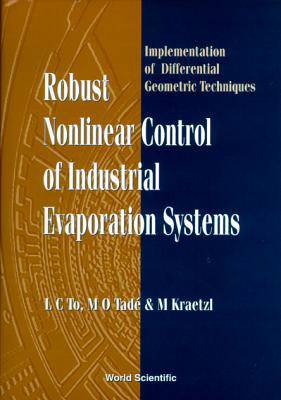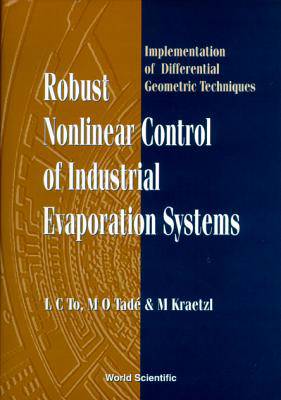
- Afhalen na 1 uur in een winkel met voorraad
- Gratis thuislevering in België vanaf € 30
- Ruim aanbod met 7 miljoen producten
- Afhalen na 1 uur in een winkel met voorraad
- Gratis thuislevering in België vanaf € 30
- Ruim aanbod met 7 miljoen producten
Zoeken
Robust Nonlinear Control of Industrial Evaporation Systems: Implementation of Differential Geometric Techniques
Miro Kraetzl, Moses Oludayo Tade, L C To
€ 160,45
+ 320 punten
Omschrijving
Nonlinearities exist in all process control systems. The use of linear control techniques is valid only in a narrow region of operation. Nonlinear control is central to future industrial development. In this book, multivariable nonlinear control techniques based on differential geometry are considered in a pragmatic manner. The book provides a simplified and systematic approach to geometric nonlinear control theory. A case study of an industrial evaporator is used as an example throughout the entire book. Various other examples are also used throughout the text to illustrate the theory. The book successfully demonstrates the superiority and simplicity of the class of controllers studied through simulations and actual plant implementations. The simulations were done using the symbolic computation package MAPLE. Discussions are given on the application of symbolic computation in process engineering.This book is aimed at industrial practitioners and postgraduates in engineering, and will be particularly valuable to practicing engineers who find the theory books on control somewhat heavy going. The insights provided in the book will encourage more industrial implementations of nonlinear controllers, and thereby help to bridge the widening gap between control theory and industrial practice.
Specificaties
Betrokkenen
- Auteur(s):
- Uitgeverij:
Inhoud
- Aantal bladzijden:
- 340
- Taal:
- Engels
- Reeks:
Eigenschappen
- Productcode (EAN):
- 9789810236144
- Verschijningsdatum:
- 2/02/1999
- Uitvoering:
- Hardcover
- Formaat:
- Genaaid
- Afmetingen:
- 165 mm x 231 mm
- Gewicht:
- 622 g

Alleen bij Standaard Boekhandel
+ 320 punten op je klantenkaart van Standaard Boekhandel
Beoordelingen
We publiceren alleen reviews die voldoen aan de voorwaarden voor reviews. Bekijk onze voorwaarden voor reviews.











